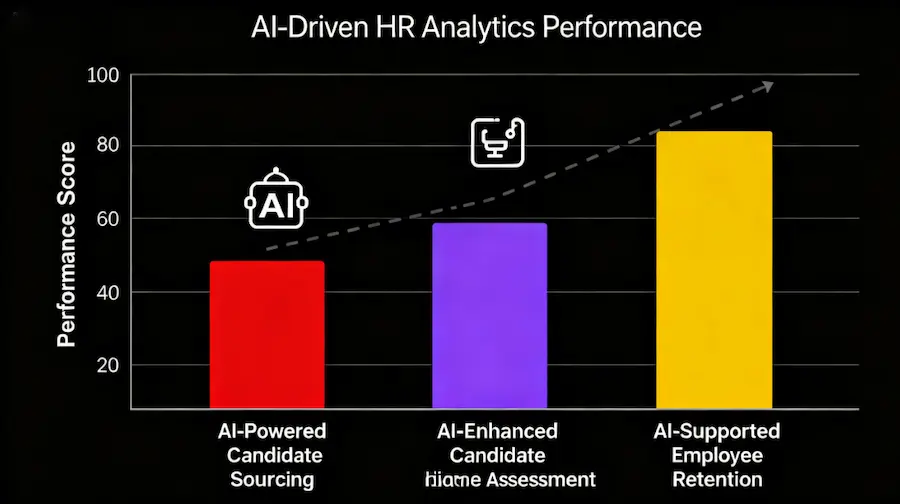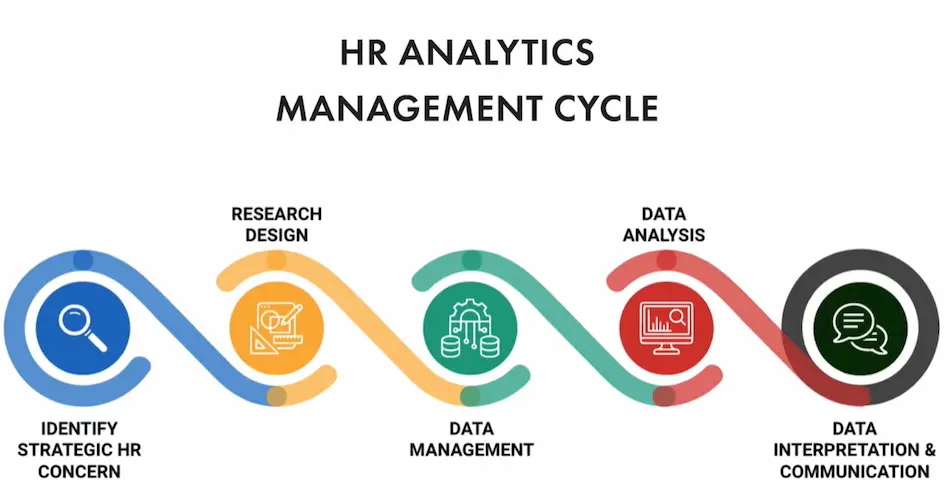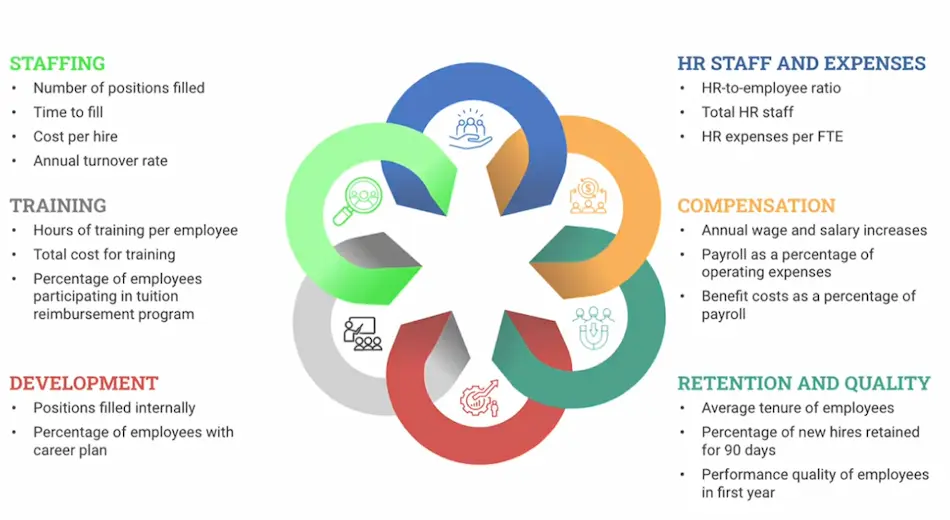The marriage between HR analytics and artificial intelligence isn’t just another tech buzzword to toss around in quarterly reviews. It’s fundamentally reshaping how smart organizations understand, manage, and nurture their most expensive asset: people. And if you’re still treating your workforce data like a filing cabinet instead of a crystal ball, well, you’re already behind.
- What HR Analytics Really Means And Why It Matters Now?
- The AI Revolution: From Descriptive to Predictive HR Analytics
- OnlineExamMaker: Best AI Tool to Bridge HR Analytics and Assessment
- The Business Case: Why AI-Driven HR Analytics Actually Pays Off
- Core AI Techniques Transforming HR Analytics
- Building Your AI-Enabled HR Analytics Program
- The Path Forward: Making AI in HR Your Competitive Advantage
What HR Analytics Really Means And Why It Matters Now?
Let’s start with the basics, shall we? HR analytics – also dressed up as people analytics or talent analytics – is essentially the practice of using data-driven methods to make smarter decisions about your workforce. Think of it as moving from “I have a hunch Susan might leave” to “Our predictive model indicates a 78% probability of turnover in Q3 based on engagement scores, project assignments, and compensation benchmarks.”
Here’s the uncomfortable truth: HR has historically been terrible at proving its value. While marketing tracks conversion rates and finance obsesses over every penny, HR departments have spent decades operating in what can only be described as a measurement vacuum. We implemented employee engagement programs without knowing if they actually engaged anyone. We rolled out leadership training without tracking whether it produced better leaders.
Why? Because measuring human capital impact is genuinely difficult. The benefits aren’t immediately apparent, and accounting practices stubbornly classify talent development as expenses rather than investments. It’s like trying to prove the ROI of teaching your kid to read – obviously valuable, maddeningly hard to quantify.
But here’s where the game changes: the strategic role of HR management has evolved. Workforce analytics now gives HR professionals what every department head craves – a seat at the table. Not the kids’ table. The actual strategy table where budget decisions get made and business direction gets set.

The AI Revolution: From Descriptive to Predictive HR Analytics
Traditional HR analytics could tell you what happened. AI tells you what’s going to happen – and more importantly, what you can do about it.
Think about it this way: old-school analytics was like looking at a photo album. You could see where you’ve been, identify patterns in hindsight, and maybe spot some obvious trends. AI in HR, on the other hand, is like having a time machine. Suddenly, you’re not just documenting history; you’re shaping the future.
Where Traditional Analytics Falls Short
Here’s what keeps traditional HR analytics awake at night:
- Scale limitations: Human analysts can only process so much data before their brains turn to mush. Got 10,000 employees generating millions of data points? Good luck spotting meaningful patterns manually.
- Linear thinking: Traditional methods assume relationships are straightforward – more training equals better performance, higher pay equals lower turnover. Reality? Way messier. Employee behavior follows complex, non-linear patterns that humans simply can’t track.
- Hidden correlations: The factors driving employee engagement might have nothing to do with what you think. Maybe it’s not the free snacks or casual Fridays. Perhaps it’s the number of cross-departmental projects, manager response time, or even office temperature. You’ll never know if you can’t crunch the numbers.
How AI Changes Everything
Predictive HR analytics powered by AI doesn’t just overcome these limitations – it obliterates them. IBM famously announced their AI can predict employee departures with 95% accuracy. That’s not magic; it’s machine learning chewing through patterns too complex for human cognition.
OnlineExamMaker: Best AI Tool to Bridge HR Analytics and Assessment
While we’ve focused heavily on analytics, let’s not forget assessment – a critical component of talent management that feeds your analytics engine.
This is where platforms like OnlineExamMaker come into play. This assessment maker software offers HR managers a streamlined way to evaluate candidates, measure employee skills, and track training effectiveness – all of which generates valuable data for your analytics programs.
What makes OnlineExamMaker particularly useful for HR analytics?
- Automated assessment creation: Build skills tests, personality assessments, and training evaluations quickly
- Data integration: Export assessment results directly into your analytics pipeline
- Customizable scoring: Design evaluations that measure what actually matters to your organization
- Performance tracking: Monitor how assessment results correlate with job performance over time
Think of it as closing the loop: your predictive analytics identify who needs development in specific areas, you deploy targeted assessments through OnlineExamMaker to measure skill gaps precisely, you implement training interventions, then you reassess to measure improvement. That complete cycle generates rich data that makes your AI models smarter with each iteration.
The platform’s exam making software also supports the personalized learning paths we discussed earlier. When your analytics reveal that different employee segments learn differently, you can create customized assessments that respect those learning styles while still measuring objective outcomes.
Create Your Next Quiz/Exam with OnlineExamMaker
The Business Case: Why AI-Driven HR Analytics Actually Pays Off
Let’s talk money. Because at the end of the day, if AI for talent management doesn’t positively impact the bottom line, it’s just an expensive hobby.
Consider these tangible benefits:
| Traditional Approach | AI-Enhanced Approach | Business Impact |
|---|---|---|
| React to turnover after it happens | Predict turnover 6-12 months ahead | Reduce replacement costs by 40-60% |
| Generic training programs | Personalized learning paths | Improve skill acquisition by 35% |
| Gut-feeling hiring decisions | Data-driven candidate matching | Increase quality of hire by 25% |
| Annual engagement surveys | Real-time sentiment analysis | Spot issues 9 months earlier |
Better Employee Experience Through Precision
Here’s something counterintuitive: people analytics with artificial intelligence makes HR more human, not less. When you can analyze employee satisfaction surveys at scale, you stop guessing what drives motivation and start knowing. You discover that your engineering team values flexible hours more than team lunches, while your sales force is the opposite. Armed with that intelligence, you can personalize experiences in ways that actually matter.
Optimized Learning and Development
Which employees prefer online training versus classroom sessions? Which courses deliver measurable performance improvements? What’s the optimal training schedule for maximum attendance and retention? Machine learning in HR analytics answers these questions by crunching participation data, assessment scores, and subsequent performance metrics. The result? Training programs that don’t waste time or money.
Turnover Prevention That Actually Works
The holy grail of AI-based employee retention analytics isn’t just predicting who might leave – it’s understanding why they might leave and what you can do about it. Maybe high performers in your marketing department churn when they hit the three-year mark because there’s no clear advancement path. That’s actionable intelligence. Create that path, and you’ve just saved six figures in recruiting and training costs.

Core AI Techniques Transforming HR Analytics
Let’s get into the nuts and bolts. What exactly are these AI techniques everyone keeps talking about?
Predictive Modeling: Your Crystal Ball for Talent
Predictive analytics in human resources uses historical data to forecast future outcomes. The applications are almost limitingly broad:
- Turnover risk scoring: Identify flight risks before they update their LinkedIn profiles
- Performance trajectories: Spot your future stars early and invest accordingly
- Promotion readiness: Take the politics out of succession planning with objective data
The beauty of predictive modeling is its objectivity. It doesn’t care about office politics, personal biases, or who plays golf with the CEO. It just follows the data.
Natural Language Processing: Reading Between the Lines
Ever wish you could analyze 5,000 employee survey comments without losing your mind? Natural language processing (NLP) is your answer. This AI technique can:
- Perform sentiment analysis on engagement surveys, sussing out emotional tone and intensity
- Extract culture signals from peer reviews and internal communications
- Identify emerging themes in exit interviews before they become exodus trends
NLP doesn’t just count keywords – it understands context, sarcasm, and nuance. When an employee writes “the new policy is interesting,” NLP knows that’s probably not a compliment.
Unsupervised Learning: Discovering What You Didn’t Know to Look For
This is where things get genuinely fascinating. Unsupervised learning algorithms discover patterns without being told what to look for. They might reveal that your most engaged employees share unexpected characteristics – maybe they all participated in that one hackathon two years ago, or they’re connected to a particular informal network.
These algorithms can cluster employees into talent segments you never knew existed, revealing natural groupings that inform everything from communication strategies to career development paths.

Building Your AI-Enabled HR Analytics Program
Alright, you’re convinced. Now what? Building an AI-driven HR analytics program isn’t about buying the fanciest software and hoping for magic. It requires strategy, structure, and a willingness to think differently.
Start Small, Think Big
Don’t try to boil the ocean. Pick one high-impact use case and nail it. Workforce planning with AI might sound sexy, but if you can’t even track basic turnover patterns, you’re not ready. Start with something focused:
- Predictive turnover modeling for your sales team
- Hiring quality assessment for your top-recruited roles
- Training effectiveness measurement for mandatory compliance programs
Prove value on a small scale, then expand. Success breeds executive buy-in, which breeds budget, which breeds bigger success.
Define Success Before You Start
What does winning look like? Be specific. “Better HR decisions” isn’t a success metric; it’s a platitude. Try these instead:
- Reduce critical role turnover by 20% within 12 months
- Decrease time-to-insight for engagement analysis from weeks to days
- Achieve 80% accuracy in promotion readiness predictions
- Demonstrate positive ROI within two budget cycles
Build Your Data Infrastructure
Here’s an uncomfortable reality: your data probably isn’t ready for AI. Most organizations have HR data scattered across multiple systems – applicant tracking here, performance reviews there, compensation in another database entirely.
You need a data-ready architecture:
- Centralized data warehouse: One source of truth for all HR data
- ETL pipelines: Automated processes to extract, transform, and load data
- Integrated dashboards: Real-time visualization of key metrics
- Clean data: Standardized, deduplicated, and validated information
This isn’t glamorous work, but it’s foundational. You can’t build a skyscraper on quicksand.
Develop Data Literacy Across HR
Your HR team needs to speak data. Not fluently – you don’t need everyone to become statisticians – but conversationally. They need to understand what predictive models can and cannot do, how to interpret confidence intervals, and why correlation doesn’t equal causation.
Partner with your data science or analytics teams. Create embedded analytics roles within HR. Run workshops on data interpretation. Make data literacy part of professional development.
Measuring Success: Leading vs. Lagging Indicators
Not all metrics are created equal. Lagging indicators tell you what already happened – quarterly turnover rates, time-to-fill averages, training completion percentages. They’re useful for historical analysis but terrible for proactive management.
Leading indicators, on the other hand, predict future outcomes. They’re your early warning system:
- Engagement momentum: Is satisfaction trending up or down?
- Time-to-productivity: How quickly do new hires become effective?
- Training ROI leading indicators: Are learners applying new skills immediately?
- Network centrality changes: Are key employees becoming isolated?
Your dashboard should balance both types, but prioritize leading indicators for strategic decision-making.
Dashboard Design That Actually Gets Used
A common mistake: building one massive dashboard and hoping it serves everyone. It won’t. Senior leadership wants high-level trends and strategic insights. HR practitioners need operational details and actionable data.
Build role-specific dashboards:
- C-suite dashboard: Workforce health overview, strategic risk indicators, talent pipeline strength
- HR leadership dashboard: Program effectiveness, budget utilization, team productivity metrics
- HR practitioner dashboard: Individual case details, daily operational metrics, intervention opportunities
The Ethical Dimension: Implementing AI Responsibly
Let’s address the elephant in the server room: ethical AI in HR analytics isn’t optional. The tools we’re discussing can perpetuate bias, invade privacy, and create dystopian surveillance cultures if implemented carelessly.
Some non-negotiable principles:
- Transparency: Employees should know what data you’re collecting and how it’s used
- Bias auditing: Regularly test models for discriminatory patterns
- Human oversight: AI should inform decisions, not make them autonomously
- Data minimization: Collect only what you need, not everything you can
- Right to explanation: People deserve to know why an AI system made recommendations about their careers
The organizations that get this right won’t just avoid lawsuits – they’ll build trust, which might be the most valuable asset in talent management.

The Path Forward: Making AI in HR Your Competitive Advantage
Here’s the bottom line: AI-driven HR analytics use cases are moving from experimental to essential. The organizations winning the talent war aren’t just offering better perks or higher salaries – they’re making smarter, faster, more informed decisions about every aspect of the employee lifecycle.
They know which candidates will succeed before extending offers. They identify retention risks before employees start job hunting. They personalize development paths that actually develop people. They measure the unmeasurable and prove HR’s strategic value with cold, hard numbers.
Is it perfect? No. AI models make mistakes, data can be incomplete, and human judgment will always have a role. But perfect isn’t the standard – better is the standard. And AI-enhanced HR analytics is unquestionably better than gut-feel decision-making.
The real question isn’t whether you should improve your HR analytics using AI. The real question is whether you can afford not to. Your competitors are already using these tools. Your future employees expect this level of sophistication. Your executive team demands this kind of strategic insight.
The era of guessing in HR is over. Welcome to the age of knowing.
Building an AI-powered HR analytics program requires the right combination of strategy, technology, and culture. Start with clear use cases, invest in data infrastructure, develop your team’s analytical capabilities, and never lose sight of the ethical implications. The organizations that get this right won’t just improve their HR operations – they’ll transform how they compete for and nurture talent in an increasingly complex world.